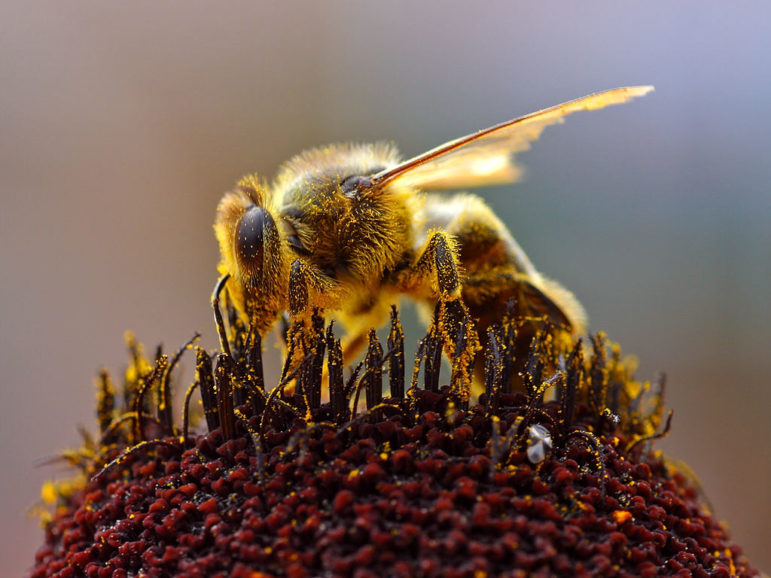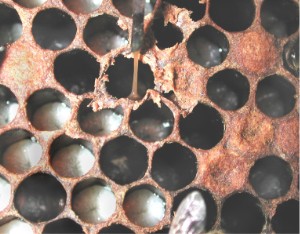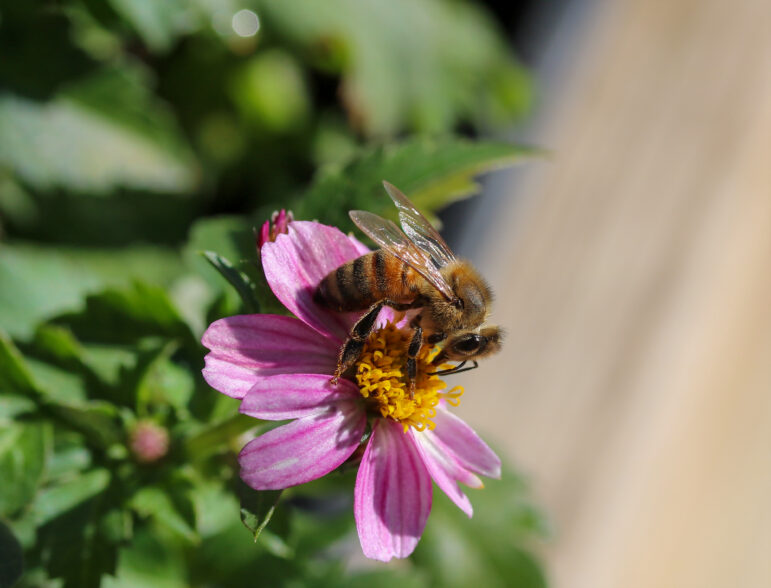TWH – As the weather warms up, Pagans are getting outside and tending their bees. The Witch in the Wood blog noted a few years ago that, “Witches have enjoyed a long and enchanting relationship with the bee, sharing many rituals, as well as other magickal traits that they have in common.” There’s even a Facebook group to bring together Pagan beekeepers.

Bees Collecting Pollen – Image credit: Jon Sullivan – public domain
Bees are critical to agricultural success. They pollinate almost a third of U.S. crops representing some $15 billion.
They are also, as the United Nations notes under threat, “Present species extinction rates are 100 to 1,000 times higher than normal due to human impacts. Close to 35 percent of invertebrate pollinators, particularly bees, and butterflies, and about 17 percent of vertebrate pollinators, such as bats, face extinction globally.”
Earlier this year, a new vaccine was developed to improve those odds. It is the first vaccine for insects ever approved in the U.S. The conditional approval came from the U.S. Department of Agriculture.
The vaccine was created by Dalan Animal Health based in Athens, Georgia. It serves as a prophylaxis for the disease called American foulbrood or AFB for short. AFB is a bacterial disease that is not only highly contagious, but it is also almost always fatal to honeybee colonies.
The USDA notes, “American foulbrood is one of the most widespread and the most destructive of the honeybee brood diseases. At first, the population of an infected colony is not noticeably decreased and only a few dead larvae or pupae may be present. The disease may not develop to the critical stage where it seriously weakens the colony until the following year, or it may advance rapidly and seriously weaken or kill the colony the first season.”

Hive larvae infected with AFB – Image credit: Pollinator – CC BY-SA 3.0
The Australian government notes, “Any of the common bee diseases may limit production. The worst of them, AFB, can be cripplingly expensive to control. The loss of hives destroyed because of AFB is a minor cost compared to the cost of the additional effort required to minimize the risk of AFB spreading within the apiaries.”
AFB is caused by a spore-forming bacterium called Paenibacillus larvae. AFB has been known as a disease of honeybee colonies for over two centuries, being confirmed as a specific and separate disease in 1907. The disease is also known for its extreme resilience. Spores can live for over 40 years and the usual means of disinfection typically fail.
When bacteria enter a colony, it infects the bee larvae causing their cells to darken in color and eventually lose their convex capping. When the larvae die, they become a light brown eventually becoming a dark brown scale that is difficult to remove. The house bees or worker bees are unable to remove the brown scale.
From the dying larvae, the bacteria release more spores that nurse bees inadvertently feed to young larvae spreading the disease throughout the colony. The house bees that come in contact with the scale are also contaminated and spread the disease as well. The larvae are the future generations of the honeybee colony so their deaths lead to continuous decline until the colony collapses.
The disease is spread between colonies by different mechanisms as well. As an infected colony becomes weaker, it is unable to defend itself from robber bees from other colonies. Those robber bees return with honey contaminated with AFB. Should the colony release a swarm of bees because of the birth of a new queen, those bees will carry AFB with them to their new home.
Beekeepers also inadvertently spread AFB by circulating honey from a hive that is seemingly free from infection or by using unsterilized instruments from one hive to another.
Beekeepers normally follow best practices that include regular hive inspections and the reporting of AFB. A field test beekeepers use to detect AFB is to touch the dead larvae with a stick. If the larvae have what is known as a “ropey,” there is a good chance there is AFB.
Some experienced beekeepers can also detect a specific odor caused by AFB. Still, laboratory testing is the only way to be sure about AFB infection. In the U.S., state apiary inspectors require that AFB-infected hives be burned. The E.U. has similar rules along with the destruction of all equipment used on the hives.
Dalan says that the new “vaccine technology exposes queen bees to inactive (i.e., ‘dead’) bacteria, which enables the larvae hatched in the hive to resist infection.” The inactive bacteria is placed in royal jelly that is consumed by the queen who then passes it on to her progeny. Scientists had previously assumed that insects were unable to produce antibodies and hence could not acquire immunity.
Dr. Dalail Freitak, an associate professor in honeybee research at the Karl-Franzens University of Graz in Austria and chief science officer for Dalan, is a pioneer on insect immunity and discovered that insects could indeed acquire immunity working first on moths.
“So they could actually convey something by eating. I just didn’t know what the mechanism was. At the time, as I started my post-doc work in Helsinki, I met with Heli Salmela, who was working on honeybees and a protein called vitellogenin. I heard her talk and I was like: OK, I could make a bet that it is your protein that takes my signal from one generation to another. We started to collaborate, got funding from Business Finland, and that was actually the beginning of our oral vaccine for bees,” Dalial Freitak said in a press release in 2020 at Helsinki University where the vaccine was developed in collaboration with Dr. Heli Salmela.

Honeybee on a flower – Image credit: Toby Oggenfuss – CC BY-SA 4.0
Antibiotics are also used in the treatment of AFB but the bacteria are slowly demonstrating resistance. At times, antibiotics are used prophylactically, a practice that is not free from controversy.
Dalan is hopeful that the new vaccine will be a major tool in preventing AFB. But the company also noted that their vaccine will open the door for more research and new vaccines. In an interview with The New York Times, Annette Kleiser, the chief executive of Dalan, called the vaccine “a huge breakthrough.”
“When we started, there was no regulatory path,” she said. “No one has ever developed an insect vaccine — they’re wild animals who fly around,” compared to domesticated livestock and pets with vaccine protocols. She added, “We’re really hoping we’re going to change the industry now.”
The Wild Hunt is not responsible for links to external content.
To join a conversation on this post:
Visit our The Wild Hunt subreddit! Point your favorite browser to https://www.reddit.com/r/The_Wild_Hunt_News/, then click “JOIN”. Make sure to click the bell, too, to be notified of new articles posted to our subreddit.